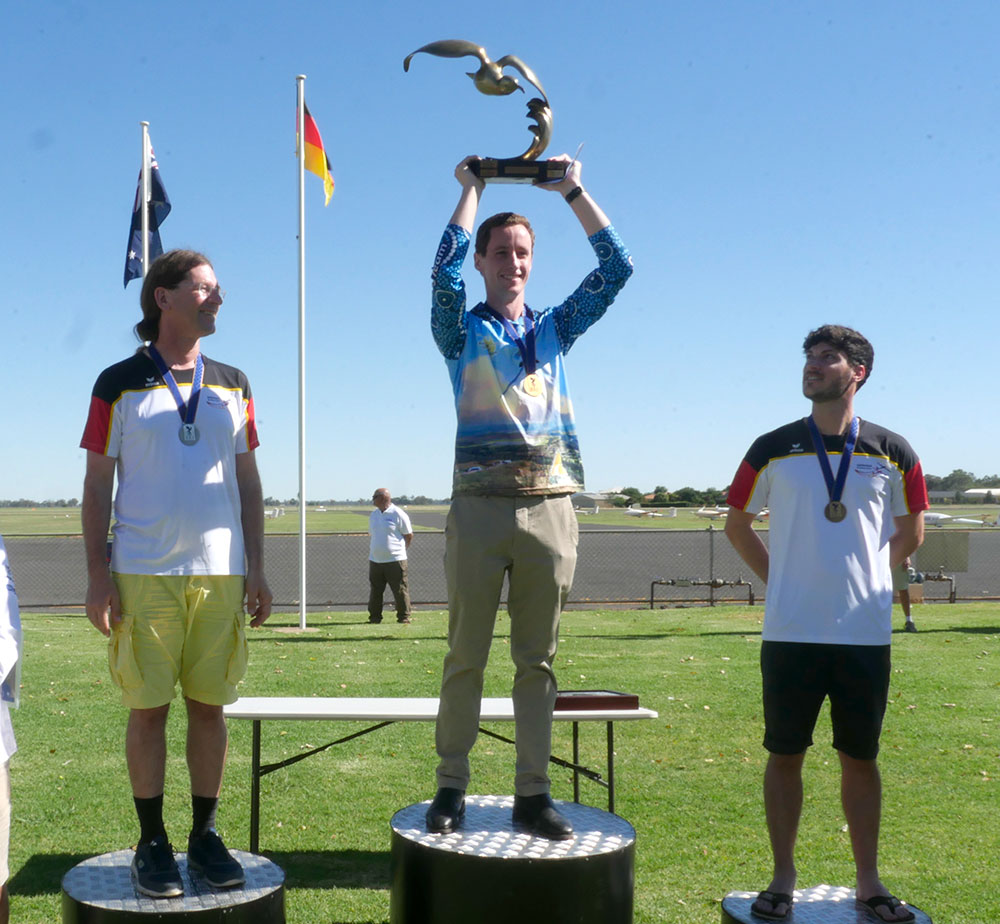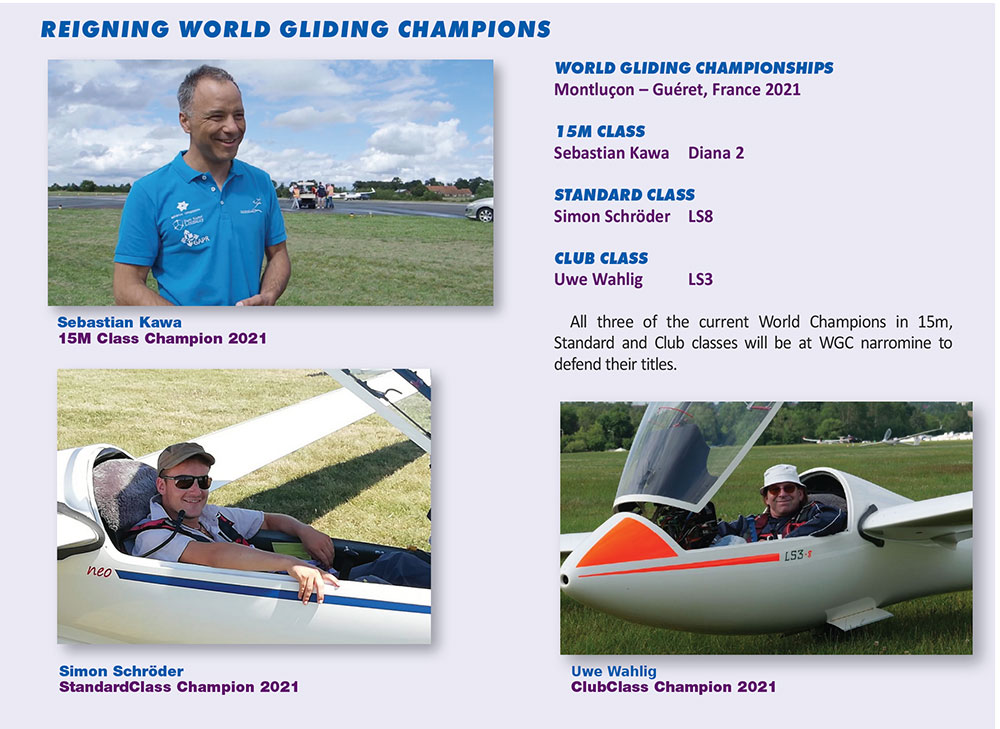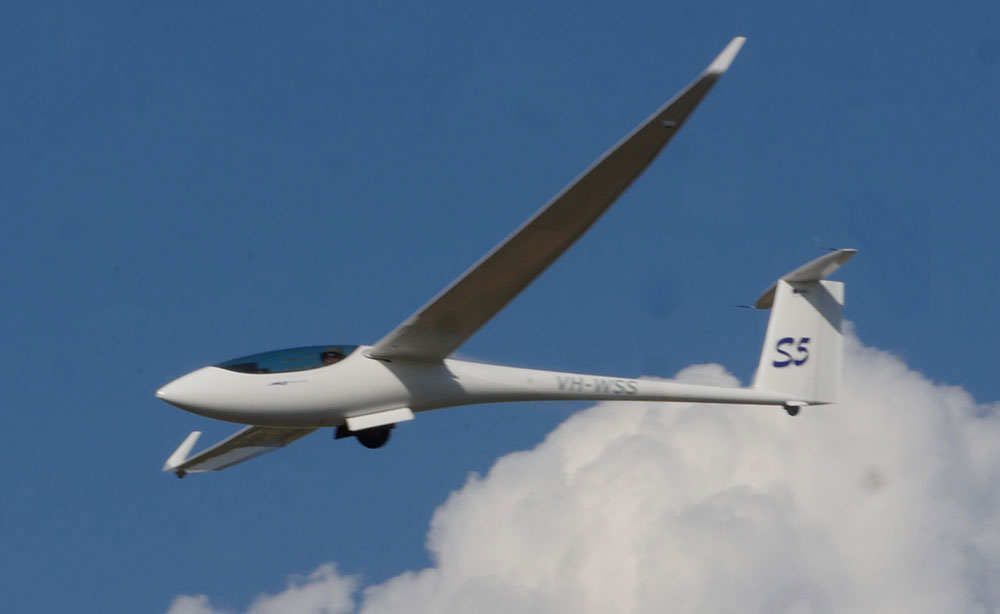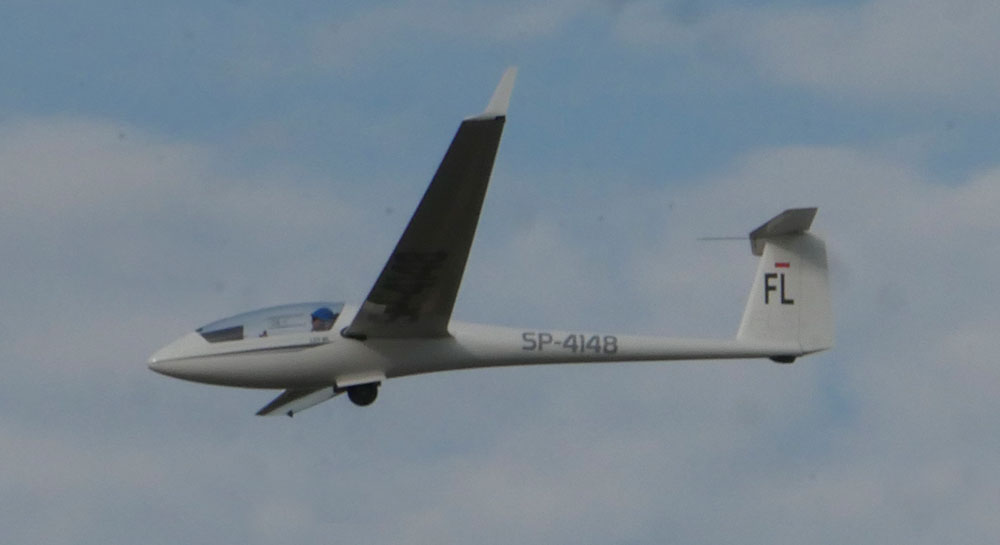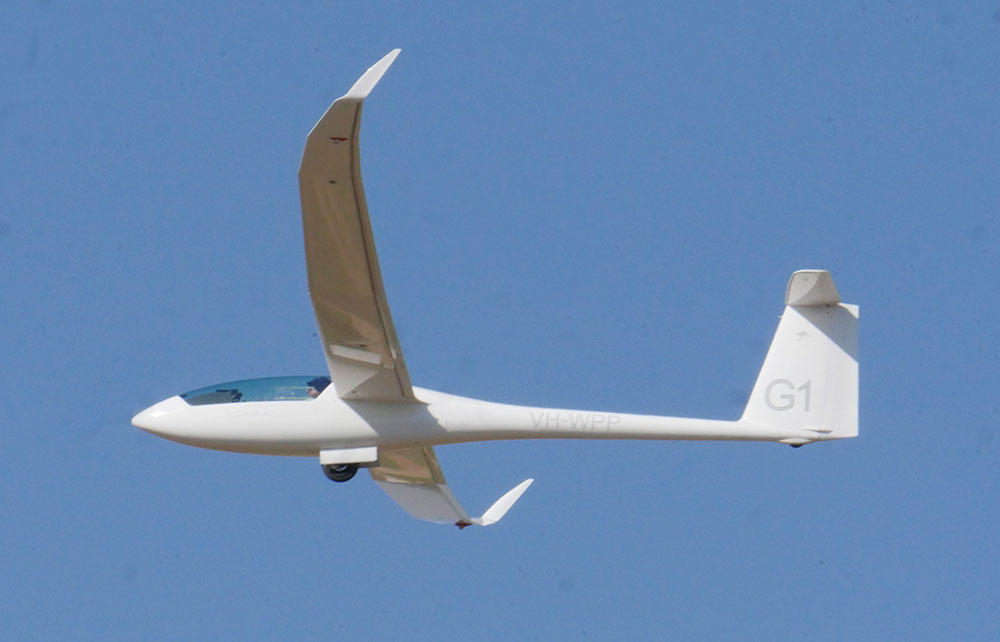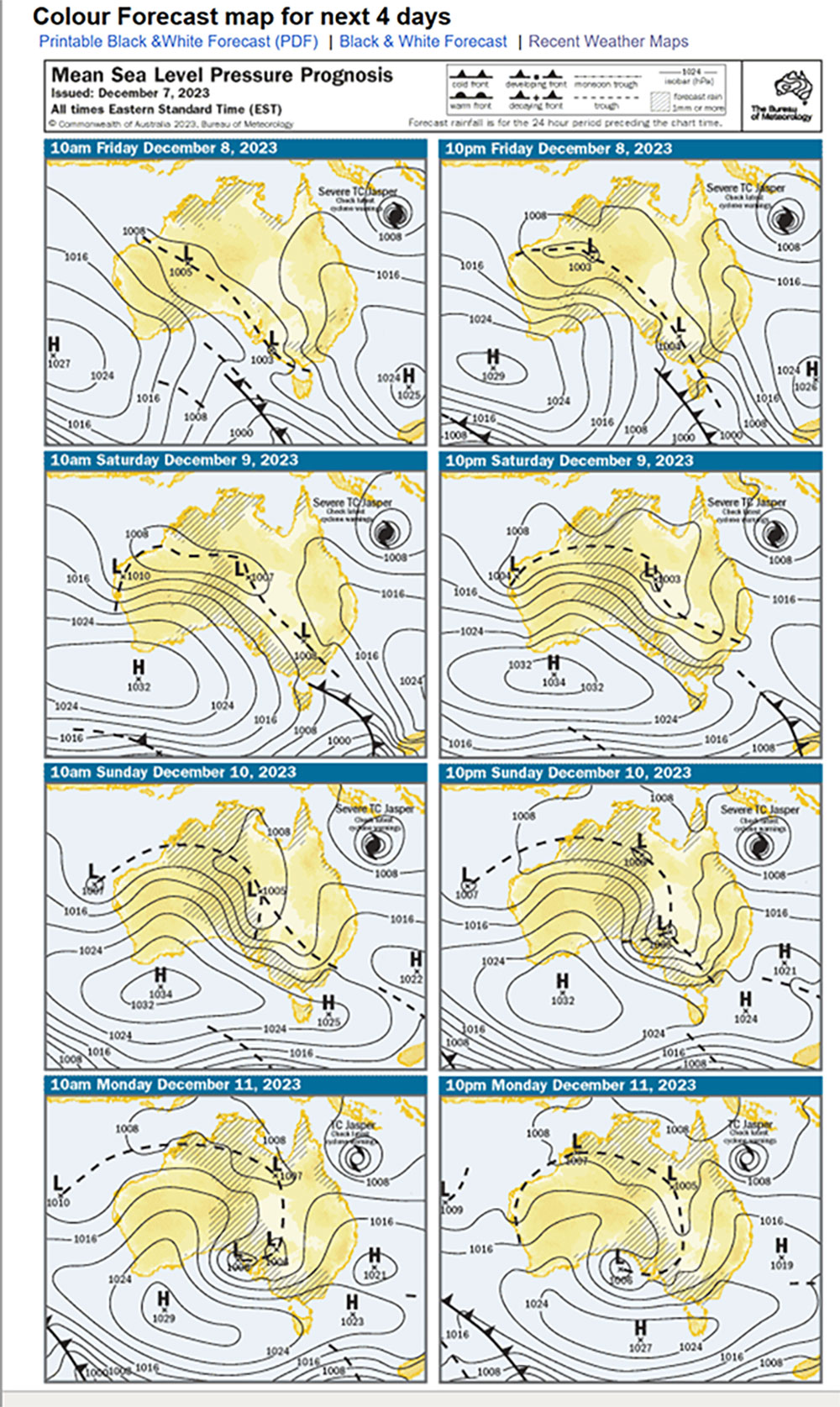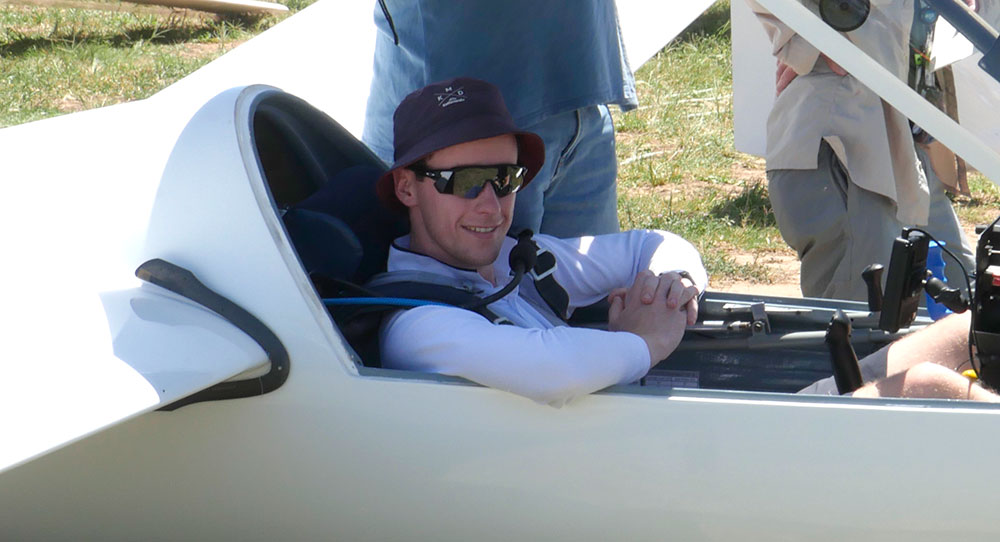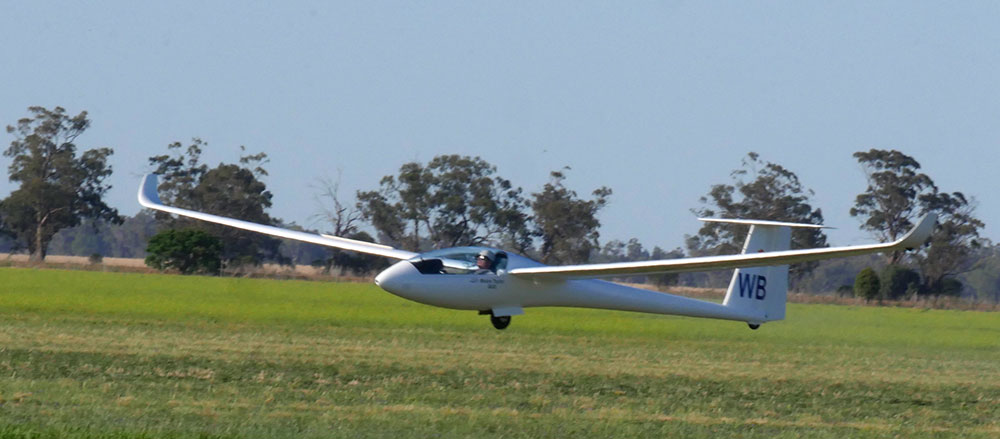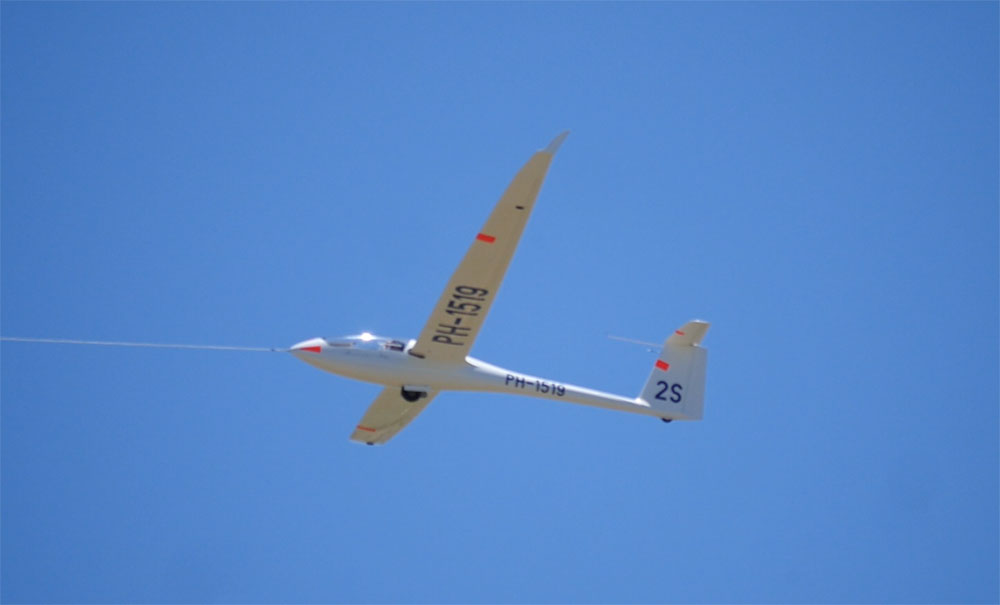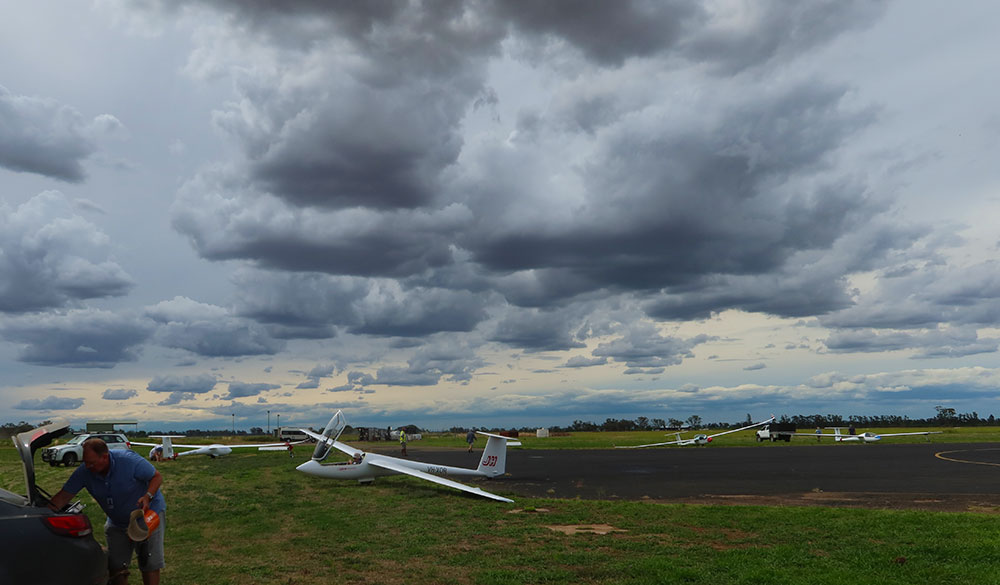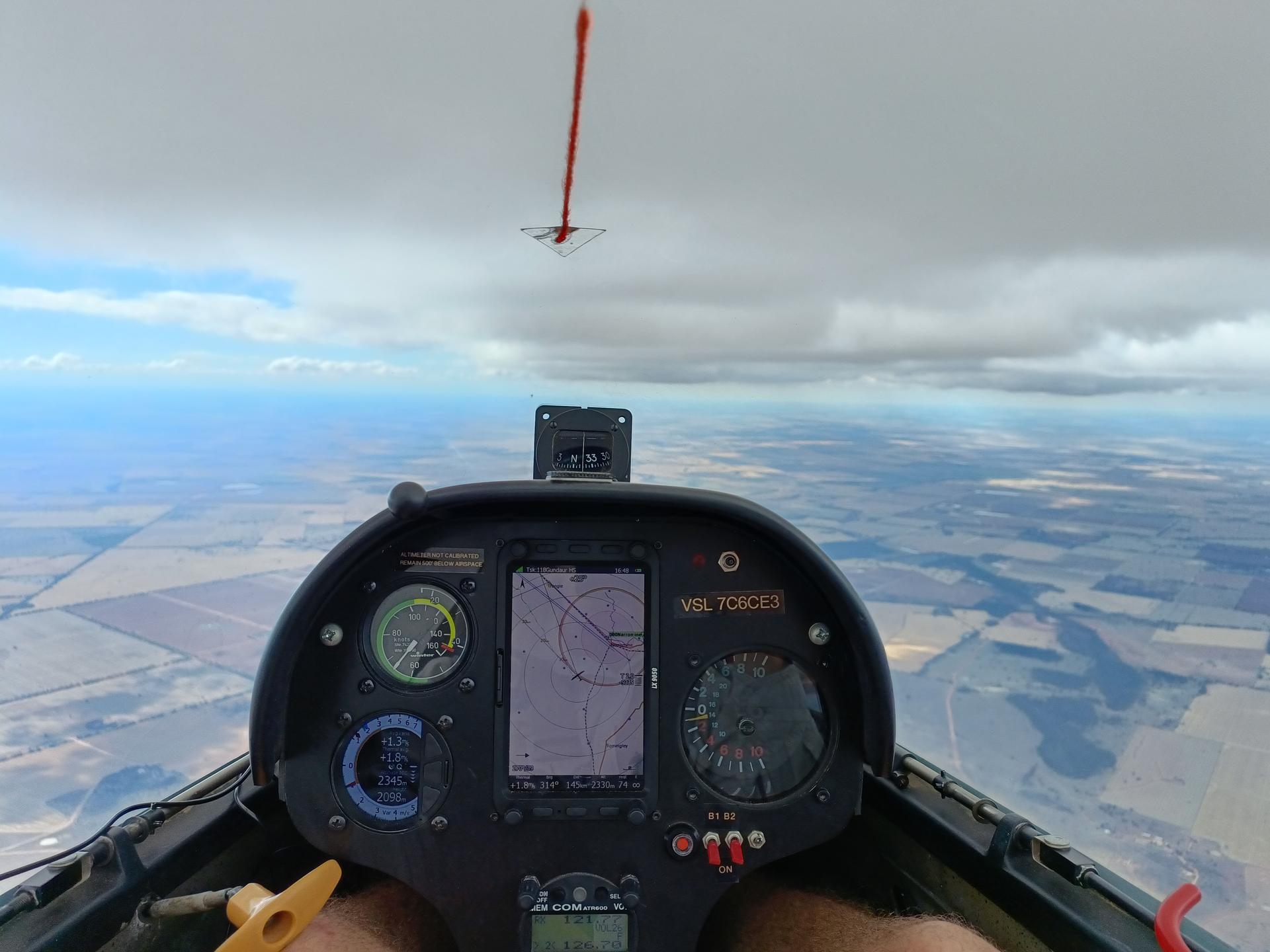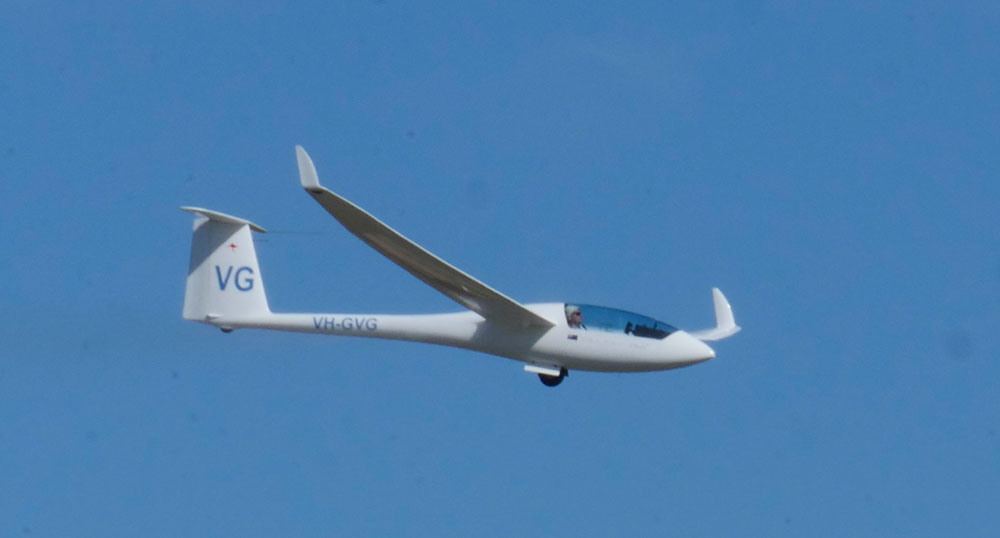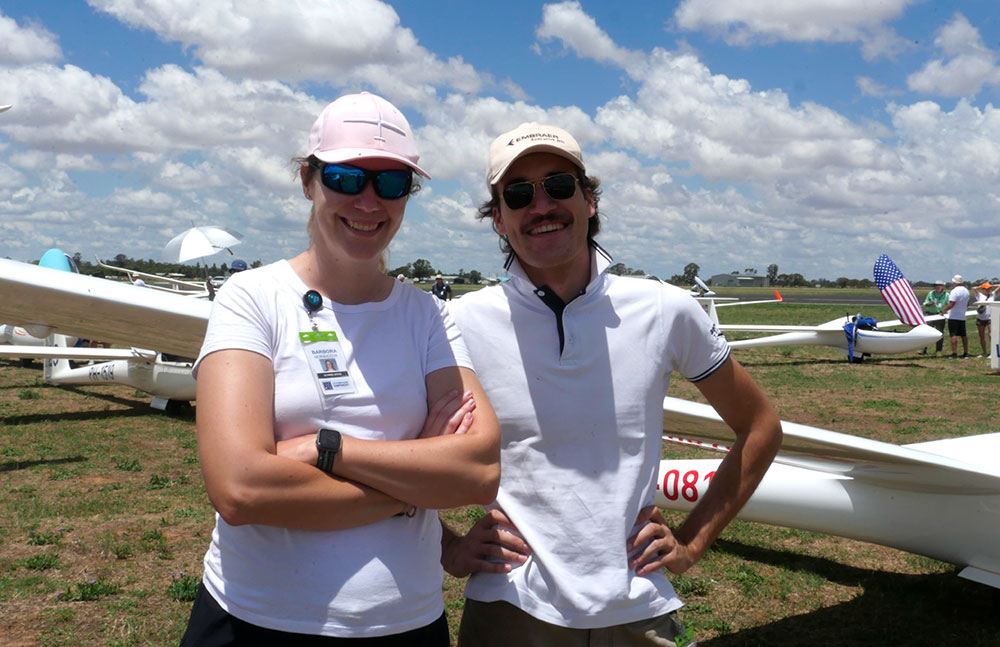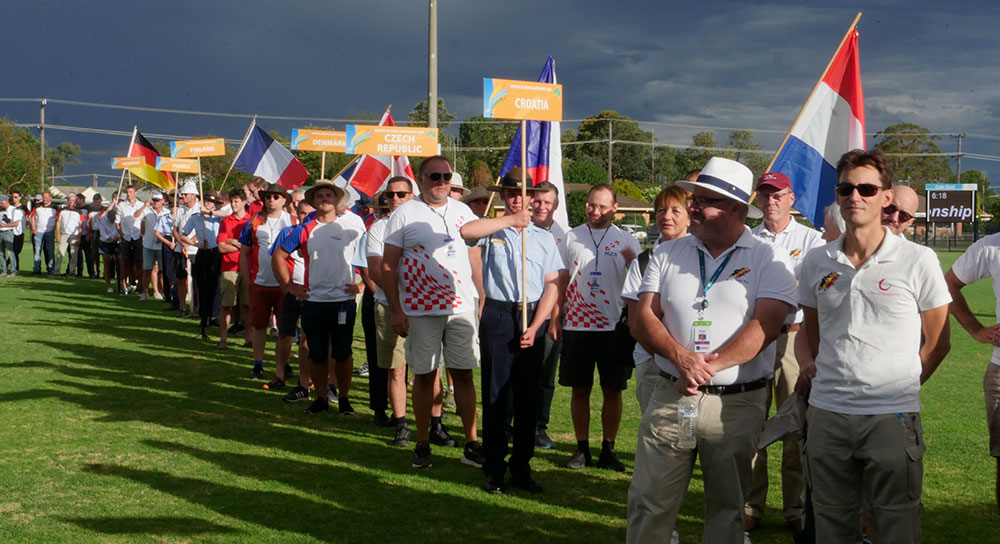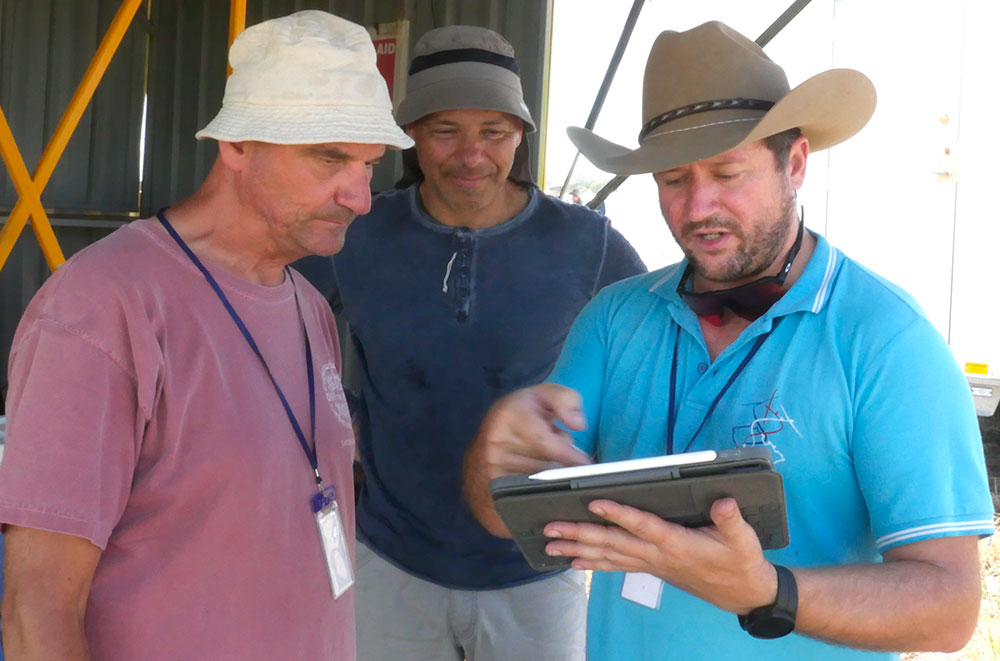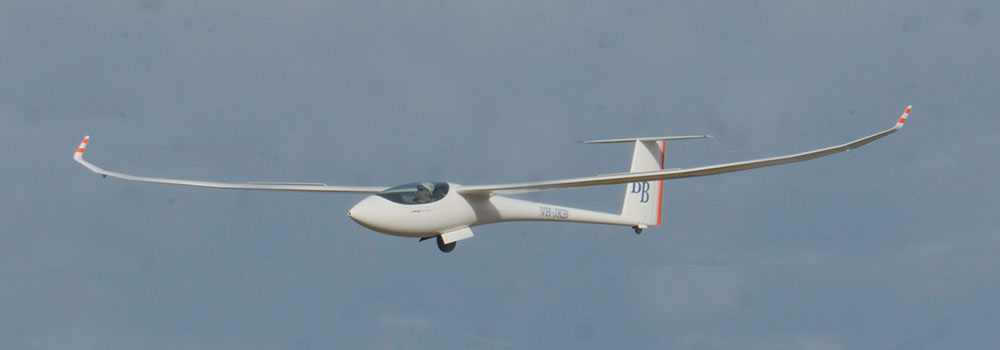
Uys Lonker, 15m Class, South Africa, landing after winning Race 5.
The weather forecast for the day predicted thermals up to 10,000 ft. However the inland trough to the west brought associated high cloud that covered the Narromine area, and cloud at varying levels was evident on satellite images. After briefing, several pilots asked me what I thought. 'Oh, it’ll burn off and be a great day,’ I said. Looking unconvinced, they dutifully prepared to launch at 12 noon as instructed. I am sure they will, quite rightly, never ask my opinion again.
Soon the launch time was pushed back to 12:30 and B tasks were set. This is not unusual at Narromine - is it unusual at any gliding site? The inland trough that is typical of this time of year, is fickle. Sometimes it is just right, while at other times the good soaring conditions can be just a bit too far west and nearly out of reach of the eastern gliding sites, including Narromine.
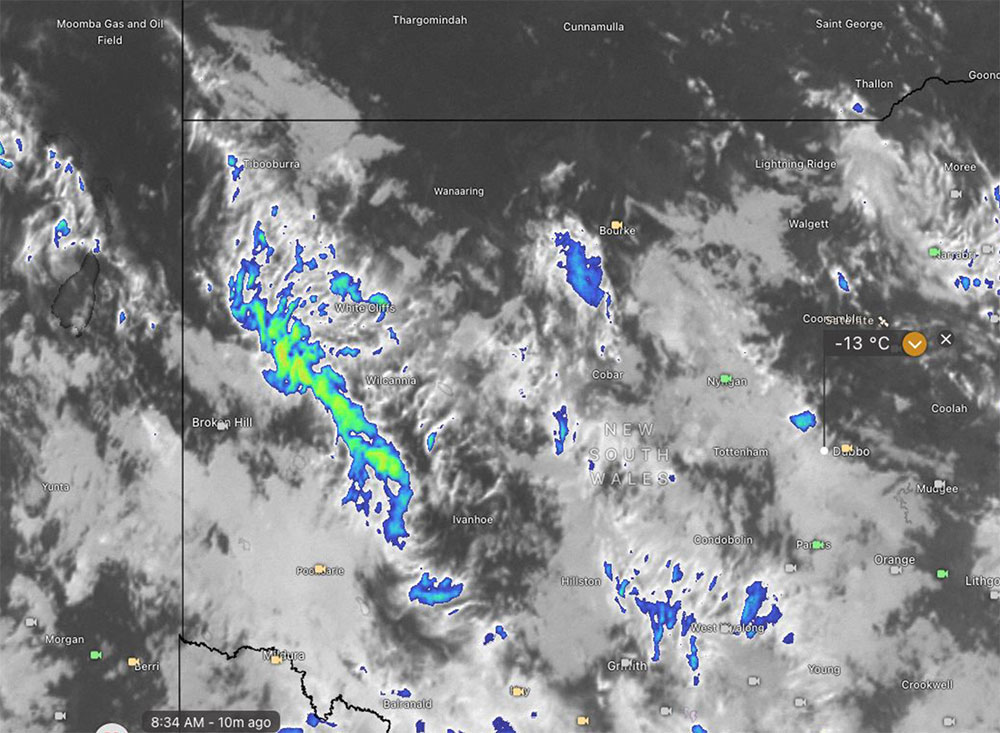
Windy Satelite image from the weather briefing.
Picture Speaks Many Words
The satellite image from the morning weather briefing was a caution to competing pilots. It showed a mush of cloud, high and low, slowly moving across New South Wales. High cloud covered Narromine for most of the day, while out in the task area it was nearly completely blue with low convection. It was not a great day.
The weather the pilots encoutered out on track was very different from the forecast weather. The thermal tops were between 6 - 7,000 ft causing many pilots to struggle to climb above 4,000ft, particularly before the start.
Some pilots delayed starting in the hope of better conditions that did not arrive. Forced to set off before it was too late to complete the task, they struggled around the AAT tasks set for all three classes. However, nearly all pilots completed the course and made it back to Narromine, albeit with far slower speeds than on Race 4.
We will hear from the winning pilots of Race 5 tomorrow at their ‘Winner Interviews’ what their experiences of the day were. I am sure they will feel they had a good day and the conditions were fine. After all, they won. But they won because they were able to assess and use the conditions they encountered, weak or strong, to the maximum. This contest is a test of champions and on days like these, the best prevail.
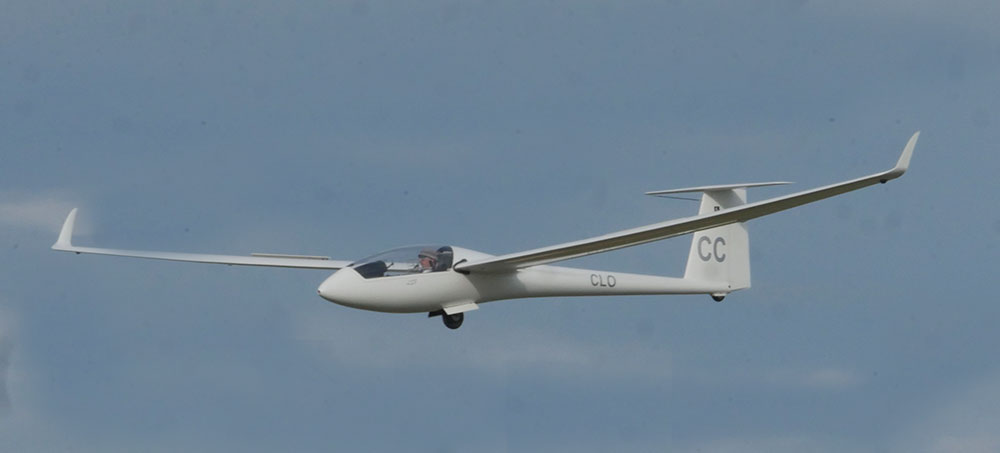
Tom Arscott, Standard Class, Great Britain landing after winning Race 5.
Standard Clsss
Tom Arscot, Great Britain won Standard Class flying 325.88km of the AAT Task at a speed of 106.55 kph to win a full 1,000 championship points. His team mate Paul Fritche Great Britain followed clocely to take 2nd place flying 315.33 at 102.76 kph. Enrique Levin, Germany came 3rd flying 302.39km at 100.80 kph.
After today's win, Tom is now in 1st place followed by Race 4 winner Simon Schröder, Germany and Sjaak Selen, Netherlands. The leader up to today, Makoto Ichakawa, Japan was relegaded to 4th place.
Australian Race 1 winner Greg Beecroft has dropped to 5th palce. His team mate Race 3 winner, Bruce Taylor, landed out today, succumbing to the weak conditions at the start time, and is now well down the rankings in 16th place.
15M Class
Uys Jonker, South Africa flew 335.16km at a speed of 110.58 kph to win his second day in a row gaining 1,000 points. Philip Jones, Great Britain came 2nd flying 324.07 km at 110.18 kph, and Steffen Goettler, Germany took 3rd place flying 322.83 km at 109.49 kph.

Jasek Fils, ClubClass, Poland landing after winning Race 5.
Club Class
Jacek Flis, Poland won the day flying 332.61km at 99.44 kph. Roelof Corporaal, Netherlands flew 322.35km 90.04 kph to finish in 2nd place and Adrien Henry, France flew 296.15km at 89.26 to take 3rd place.
These AAT distances and speeds - from the best pilots in the world - show that it was a tough day.
Weather Forecast Models
Yesterday I showed the Australian Bureau of Meterology 4 Day Prediction Chart. This is the starting point for many pilots, to gain an overall picture of the weather situation. From this overall picture, pilots will access a variety of other resources to gain a detailed soaring probability view. Often these resources vary in their predictions. Today Skysight predicted cumulus and high thremals over the area, while XCSkies showed blue conditions. This highlights the importance of using a variety of sources to gain an informed probability of the conditions. But as all glider pilots know, the most reliable source is looking out the window.
Forecast for 9 December Race 6
All the forecasts for tomorrow 9 December predict a strong soaring day. The pilots at WGC Narromine will soon find out if the predictions turn out to be correct.
Sean Young

Skysight forecast Cumulus Cloudbase 16:00 (local) December 9.
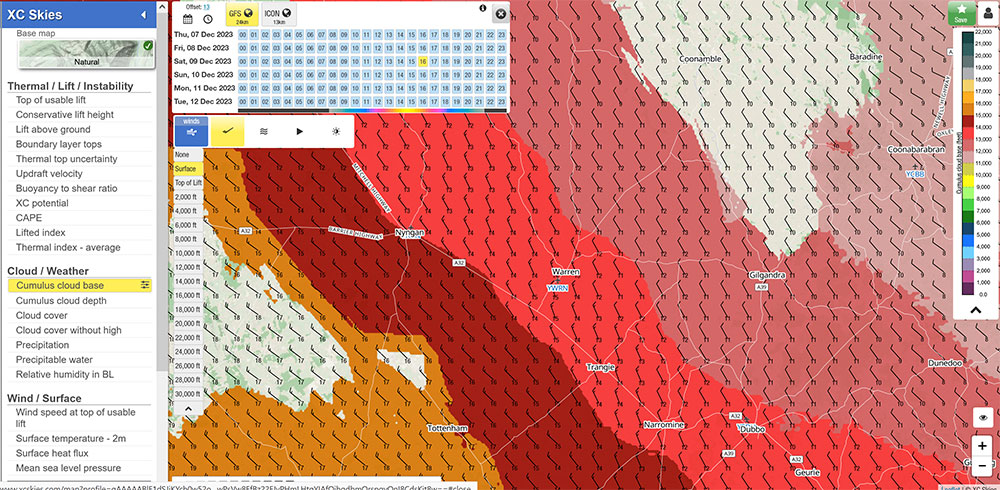
XCSkies Cumulus Cloudbase 16:00 (local) December 9


